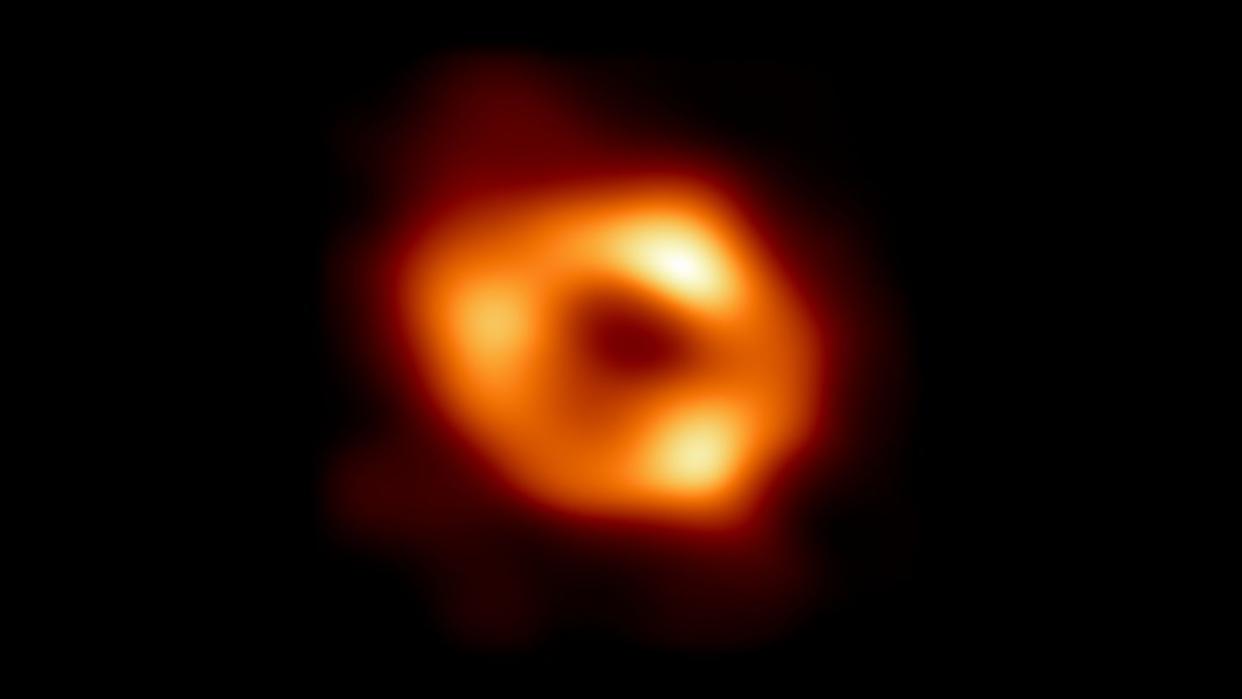The Milky Way's Supermassive Black Hole Has a Secret Chimney

Although supermassive black holes—such as Sagittarius A* (Sgr A*) at the heart of our galaxy—are known for their voracious appetites, they also expel a lot of material at super-fast speeds.
Scientists have now spotted an “vent” expelling high-energy X-rays some 700 light-years from Sgr A* itself at the end of a black hole “chimney” formed by magnetic fields.
While the discovery of this vent helps complete the picture of how Sgr A* ejects material, scientists aren’t exactly sure if the black hole is ejecting large amounts at once or stoking the fire over time.
At the center of every galaxy is an immense cosmic engine known as a supermassive black hole. In the Milky Way, that engine is known as Sagittarius A* and it’s the ultra-massive object—around 4.3 million times the mass of our Sun—about which our galaxy, our solar system, and you and I orbit.
While that’s been the arrangement for billions of years, scientists are only beginning to figure out all the strange mechanics of this cosmic engine. And now, a new study accepted for publication in The Astrophysical Journal explores the surprisingly immense “exhaust vent” that channels gasses from the heart of the Milky Way to some 700 light-years away. This study used X-ray data from Chandra Observatory—one of NASA’s Great Observatories, along with Hubble and the retired Spitzer space telescopes—to pinpoint this hidden mechanism.
“Astrophysicists have long been interested in the movement of material and energy from the Milky Way’s center and its black hole, both to understand what’s happening in our cosmic backyard and how galaxies form and evolve,” University of Chicago’s Scott Mackey, who lead the study, said in a press statement. “We’re really excited to find this new piece of the puzzle.”
We usually think of black holes (especially the supermassive ones) as voraciously consuming everything in their paths, forcing energy to sort of traveling in only one direction—inward. However, because black holes are such messy eaters, they also tend to fling material outward at high speeds. And when that superhot gas collides with cooler gas, it produces high-energy X-rays.
Peering at the galactic center using Chandra, which has eight times greater resolution than any X-ray telescope before it, the research team identified the previously described “chimney” standing perpendicular to the galactic disk. This chimney is formed via magnetic fields, which constitute the “walls” of the chimney.
But at the top of the chimney, at a staggering 700 light-years away from Sgr A*, the team discovered a “vent” of X-rays. Compared to the Earth, or even the Sun, Sgr A* is very large—around 14.6 million miles in diameter. However, compare that to the length of this chimney, and the researchers note that it’s like “an ant flinging something to the height of Mount Everest.”
While this study gives a full look at the entire chimney/vent structure, the researchers aren’t exactly sure what’s going on at the source, meaning they don’t know exactly how this chimney and vent are being fed.
“We’re not sure if this energy and heat are stoked by a large amount of material being dumped onto Sagittarius A* at once, like a bunch of logs being dumped on a fire,” University of California Los Angeles’ Mark Morris, a co-author of the study, said in a press statement. “Or it might come from multiple small loads being fed into the black hole similar to kindling being regularly tossed in.”
Understanding this chimney and vent system could also unravel other mysteries surrounding black holes—like, literally surrounding them, in the cases of Fermi Bubbles and eROSITA Bubbles. This could help prove that Sgr A* was once much hungrier than it is today.
But for now, the new information only reinforces the image of Sagittarius A* as the central hearth of our galactic home—chimney, vent, and all.
You Might Also Like


